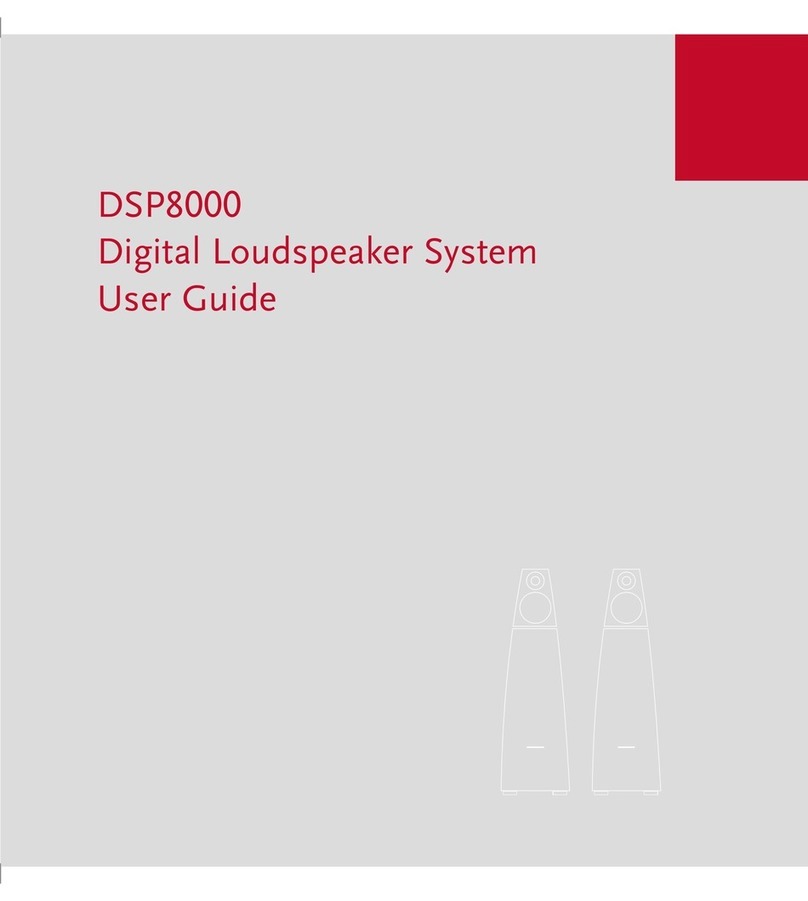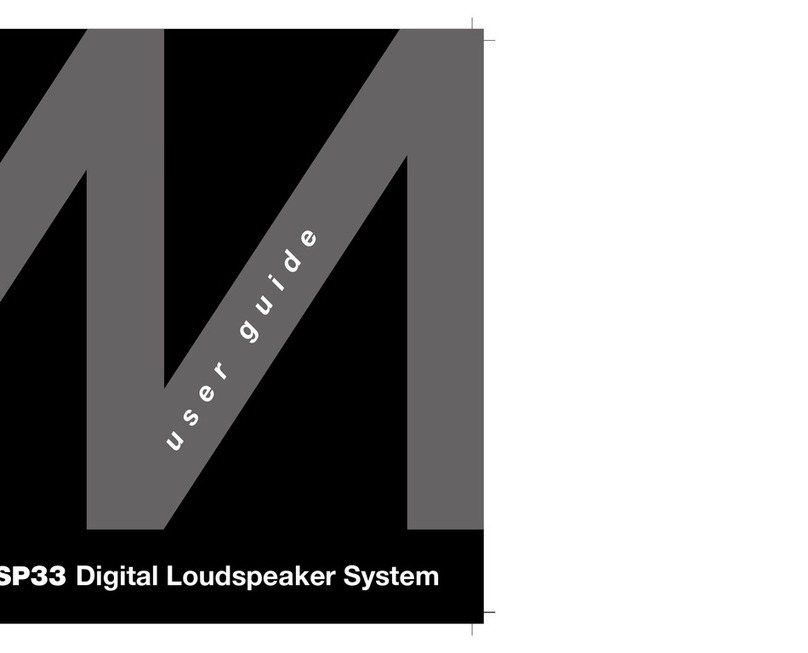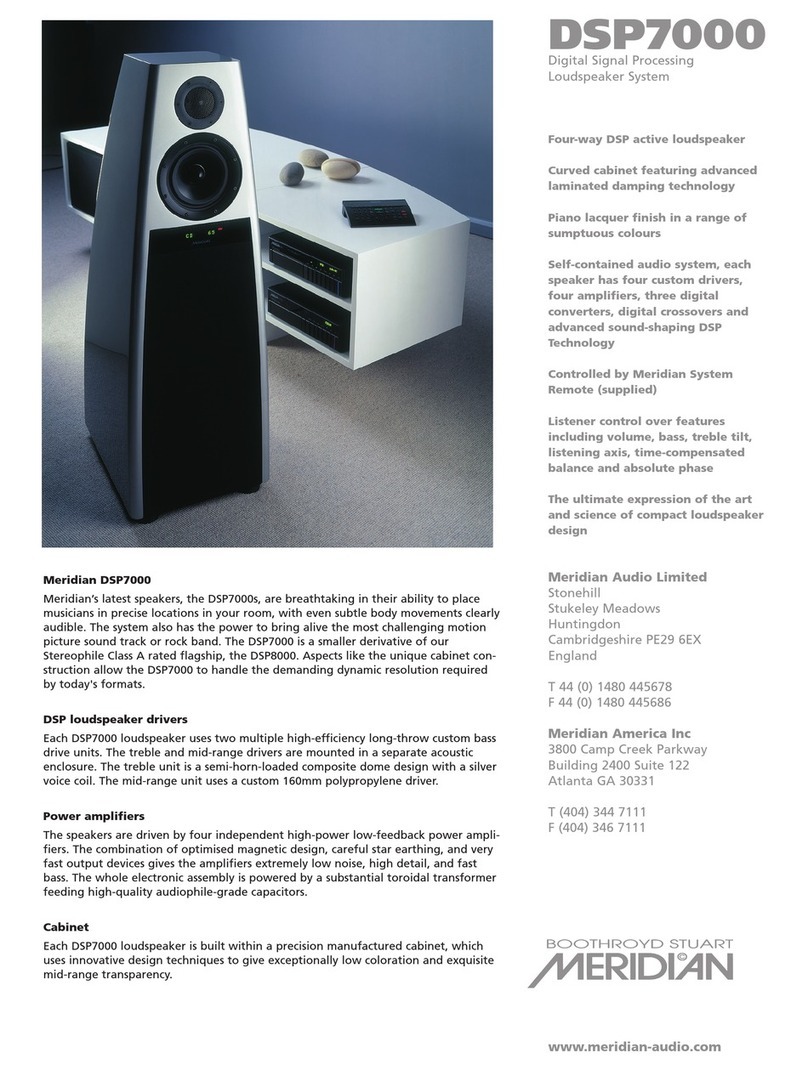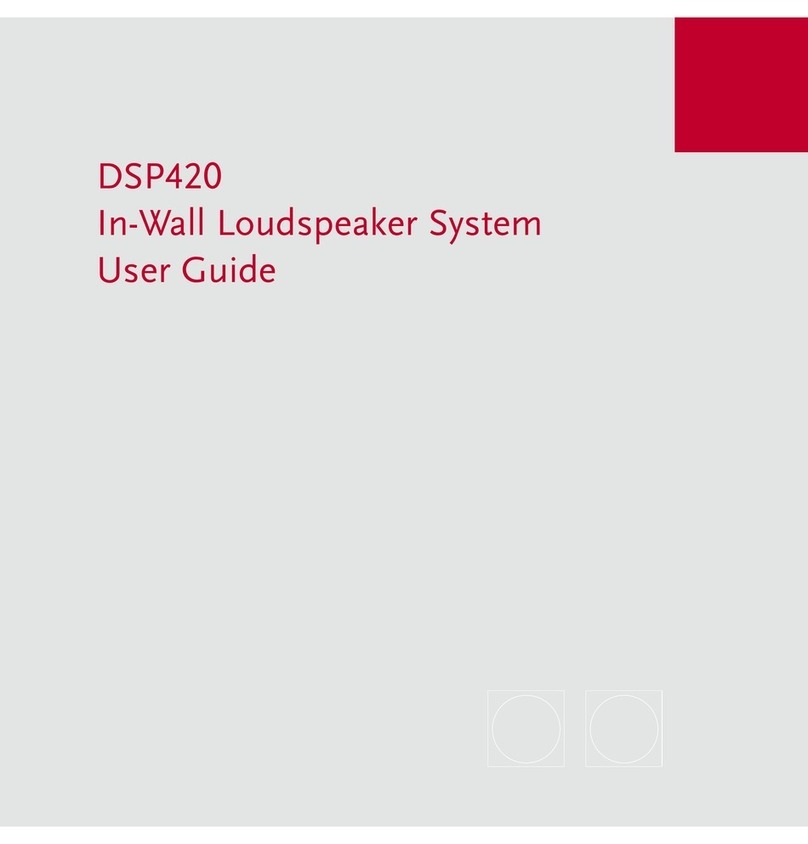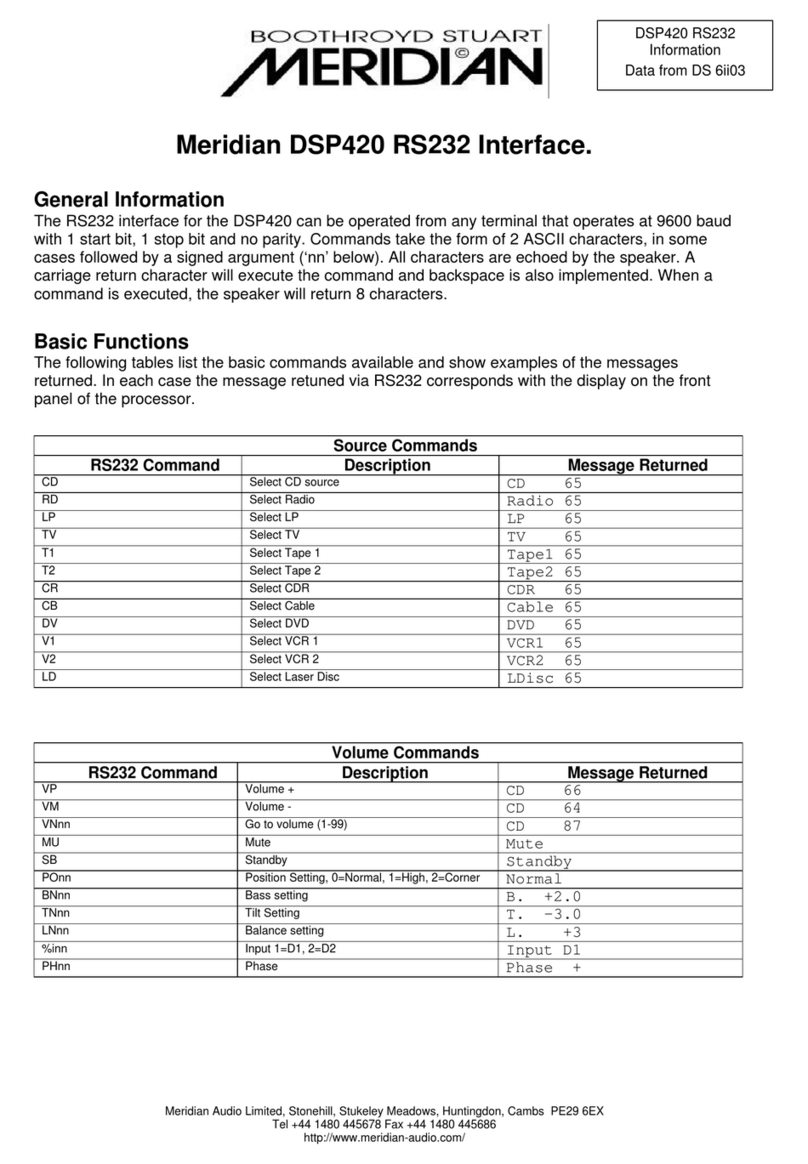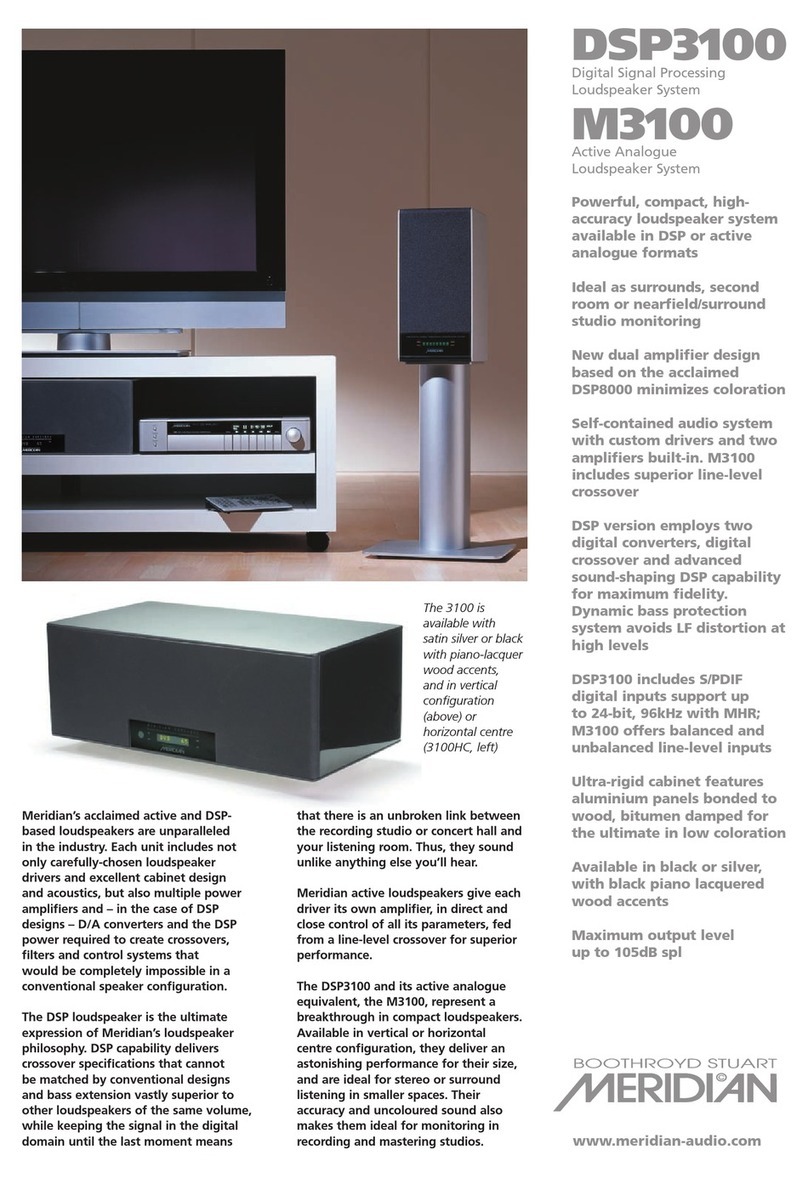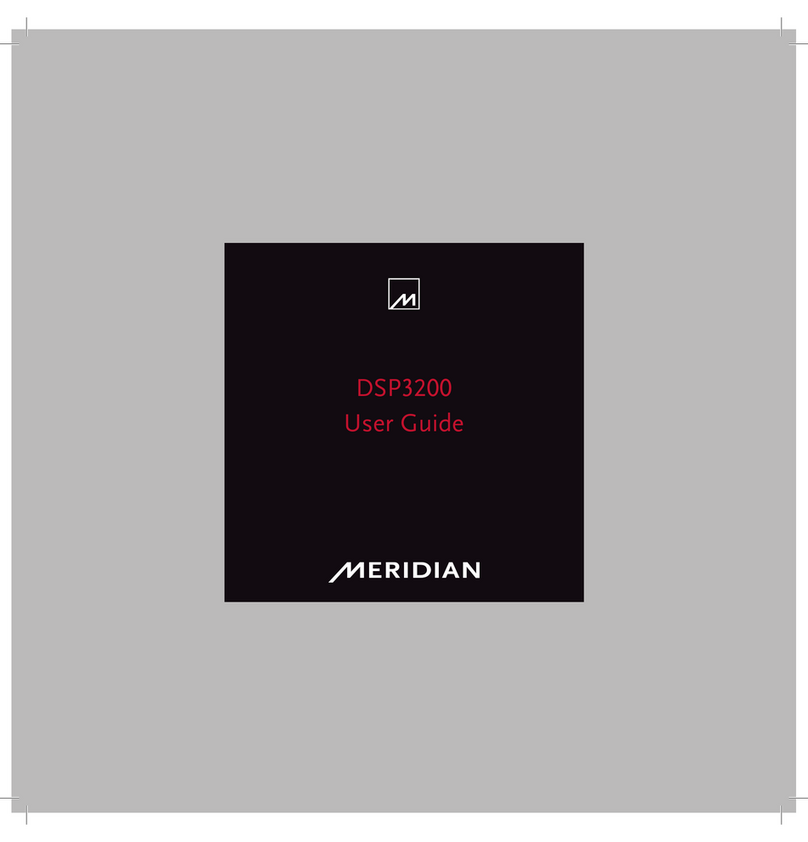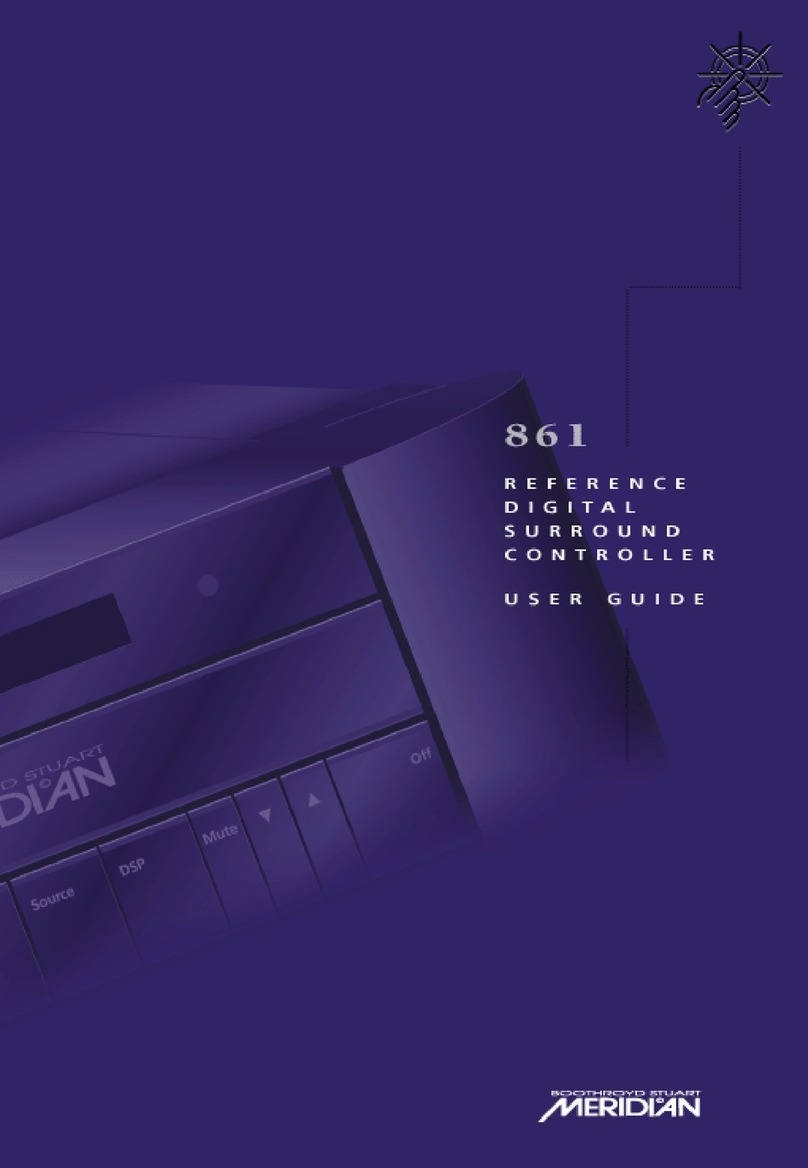2
Introduction Meridian DSP8000 loudspeaker system
The Meridian DSP8000 loudspeaker system represents
the fruits of more than 30 years of continuous
development of loudspeakers as musical instruments.
The finest materials and state-of-the-art design are
combined to create what we believe is the ultimate
home loudspeaker.
Digital Signal Processing
Digital Signal Processing, or DSP, is a technique
pioneered by Meridian in hi-fi products for achieving
extremely accurate reproduction of audio signals using
high-precision mathematical processing.
DSP allows sophisticated processing to be performed
without any of the cumulative noise or degradation
that inevitably occurs, even with high-quality analogue
circuitry. In addition, the signal improvement techniques
incorporated in the Meridian DSP loudspeakers would
be virtually impossible to implement in analogue
circuitry.
The Meridian DSP loudspeakers take advantage of
DSP for several different functions:
To remove timing variations from the incoming digital
signals (de-jittering).
To upsample 44.1kHz and 48kHz signals to 88.2kHz
and 96kHz.
To split the frequency band between bass, mid-
range, and treble drivers (crossover).
To perform filtering or adjustment of the frequency
response; eg treble or bass.
To provide volume control to 48-bit precision.
To perform electronic equalisation.
If you are using the Meridian DSP loudspeakers with a
digital source, such as CD or DVD, the signals remain
in digital form until the last possible stage.
•
•
•
•
•
•
DSP loudspeaker drivers
Each DSP8000 loudspeaker uses six multiple high-
efficiency long-throw custom bass drive units. The
bass units are mounted symmetrically in pairs on the
sides of the bass cabinet, cancelling vibration in order
to minimise interference with the mid-range and treble
units.
The treble and mid-range drivers are mounted in a
separate sealed head assembly. The treble unit is a
semi-horn-loaded composite dome design with a silver
voice coil. The mid-range unit incorporates a cone
made from a uniquely light and stiff combination of
polymers to give unparalleled transparency.
Power amplifiers
The speakers are driven by five independent high-
power low-feedback power amplifiers mounted on a
multi-finned extruded heatsink. The combination of
idealised magnetic design, careful star earthing, and
very fast output devices gives the amplifiers extremely
low noise, high detail, and fast bass.
The whole electronic assembly is supplied from two
substantial toroidal transformers feeding high-quality
audiophile-grade capacitors.
Cabinet
Each DSP8000 loudspeaker is built around a precision
manufactured cabinet, which uses innovative design
techniques to give exceptionally low coloration and
amazing mid-range transparency.
The head assembly is a sealed enclosure fabricated
from curved pressure-laminated panels, each using
multiple layers of selected woods and metal to provide
high stiffness and damping. Its narrow tapered shape
offers optimum dispersion across a wide listening
area. It is supported on the bass enclosure by three
machined feet.
